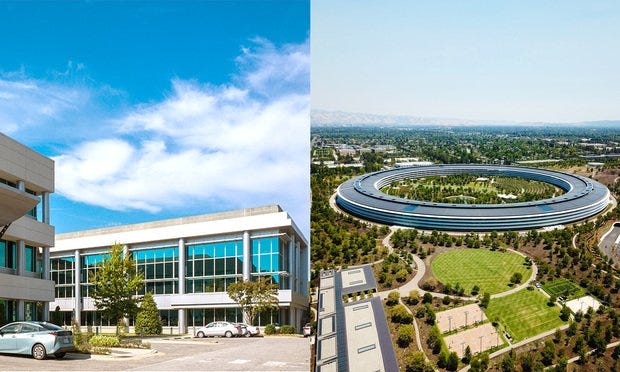epic vs apple explained 😠 - part 2
Two giants fighting fire with fire.
Summary from part 1
In part 1 of this story, I covered the main premise behind Epic’s lawsuit and Apple’s countersuit. In this second (and final) part, I’ll provide more highlights in chronological order up until the present day, where the trial is currently ongoing. This is where the story really gets engrossing - so bucket up.
Nineteen Eighty-Fortnite
In part 1, I left off at the point where Apple decided to remove Fortnite from their App store - a crucial blow to Epic’s business and a discernible action echoed throughout the entire gaming and iOS community.
It was on that same day (Aug 13, 2020): literally 2 hours after Apple removed Fortnite from their App store, Epic held a special event for its users to announce their struggles against Apple, where it completely denounced Apple’s ban.
This event featured a peculiar yet intriguing video titled “Nineteen Eighty-Fortnite” - a play-on-words based off of a similar commercial released by Apple back in 19841. The video featured various Fortnite animations and concluded a pronouncing and condemning message on the big screen at the end: “Epic Games has defied the App Store Monopoly.”
Twitter War
Alongside this declaration of war, Tim Sweeney himself exposed the emails he sent to the Apple execs - ones that illustrated his attempt to have Fortnite back on the App Store. He did this to prove that his team “came in peace” and that they had attempted to consolidate a proper request to avoid the 30% cut. This in-turn infuriated the tech giant, accusing Sweeney of requesting “special treatment.”
Eventually, the court ordered Apple to give back Unreal Engine development abilities to Epic. Some saw this action as a means to close out the feud as a stalemate, despite the antitrust lawsuit still ongoing.
Epic said nah fam. They instead filed a second motion asking for Fortnite to be back on the App Store until the lawsuit is settled. They weren’t trying to lose business that easily while fighting fire with fire. However, Epic’s dumbfounding activity was the last straw for Apple. In a blink of an eye, they prepared and launched a series of major countersues, with a teeny-weeny 65-PAGE RESPONSE to boot, which depicted in detail Epic’s wrongfulness and Apple’s innocence. Tl;dr on the response: we’re right and you’re wrong, so get ready to be decimated.
Only a day after this major response, Epic tweeted in desperation, proclaiming that Apple were about to eliminate any option to sign-in into Fortnite with Apple accounts. While this does sound fair to allure attention so Epic could reinstate their victim position, this was also plain insanity. This potentially meant over 60% of its iOS player base would vanish into thin air. In other numbers, over 115 million iOS users on Fortnite would be wiped out; 73 million of them played the game ONLY via Apple’s platform2. So did this actually happen?
Headed to Battle
The result was somewhat anti-climatic: Apple didn’t end up abolishing the “sign-in with Apple” feature (The inability for iOS users to receive updates still held true). On Sept. 17 in their latest court filing before the trial, they instead claimed that Epic was doing nothing more but to utilize its whole antitrust lawsuit as a “marketing campaign.” While Apple’s monopolistic actions against Epic can draw some sympathy for the game studio from smaller businesses suffering similar effects from the 30% cut, Apple had supporters too. From their perspective, Apple did nothing blatantly wrong; they had existing terms and conditions that Epic seemingly broke. They were targeted with a condemning commercial named after them. They were even accused of preparing to delete all Apple Fortnite accounts, which was nothing more than a farse.
And yet, with all Epic’s claims and accusations of needing to subvert Apple’s authority, Apple fought fire with fire and loosened any remaining innocence by deploying more monopolistic tactics. On Sept. 17, Epic publicized Apple’s new repercussion of preventing Epic from distributing new games or patches in the Mac system. It’s without a doubt the Epic were realistically being driven to a wall. Without the ability to release patches, existing Mac users would be stuck with older versions of Fortnite, and thus potential bugs.
The showdown
Every feeling about this trial so far has been palpable to the very core for both sides. It’s without a doubt that what looms ahead is nothing short of amusement for third parties watching this whole fiasco flesh out, which could result in a debacle for either side. During this three-week trial thus far, many artifacts of data have circumvented to publicity - especially for Epic. As the closing arguments are brought forth by both parties, it’s hard to deny just how detrimental this battle has been to both sides. Epic’s relentless pursuit against Apple’s actions have been nothing short of astounding. Will Fortnite be back in liveliness again on over 115 million iPhones? Or will Epic’s attempt to drive a new wave of antitrust battles against tech giants be crippled to dust?
Turn that frying pan into a drying pan.
Kasey
Çakır, G. (2020, November 24). Apple vs. Epic Games Fortnite Lawsuit Timeline. Dot Esports. https://dotesports.com/fortnite/news/apple-vs-epic-games-fortnite-lawsuit-timeline.
Tassi, P. (2020, October 10). 'Fortnite' Has Given Up 73 Million iOS Only Users In Order To Fight Against Apple. Forbes. https://www.forbes.com/sites/paultassi/2020/10/10/fortnite-has-given-up-73-million-ios-only-users-in-order-to-fight-against-apple/?sh=46810a6825e9.




